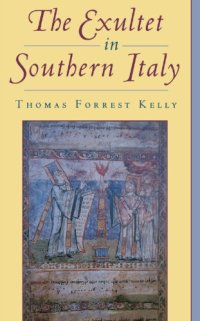
Ebook: The exultet in Southern Italy
Author: Catholic Church, Kelly Thomas Forrest
- Tags: Boekrollen, Catholic Church--Italy--Liturgy--History, Exsultet jam angelica turba caelorum, Exultet (liturgie), Exultet rolls--Italy Southern--History, Exultets (Liturgy)--History, Liturgie--Italie (sud)--Manuscrits, Liturgische boeken, Liturgics, Exultet rolls, Exultets (Liturgy), Church history, History, Catholic Church -- Italy Southern -- Liturgy -- History, Catholic Church, Exsultet, Exultets (Liturgy) -- History, Exultet rolls -- Italy Southern -- History, Italy Southern -- Church history, Southern Ital
- Year: 1996
- Publisher: Oxford University Press
- City: New York;Italien;Süd;Italy;Southern;Southern Italy
- Language: English
- pdf
"The beautifully worked Exultet scrolls of southern Italy unite music, liturgical text, and image for use in a ceremonial blessing of the great Easter candle. Much was uncommon about this solemn rite, and from a perspective a millennium or so removed in time, the ritual and its magnificent documents appear unusual to the point of mystery. Why, for example, did it fall to the deacon and not his superior the bishop to conduct the Exultet ceremony? And why on many of the later surviving documents were the pictures turned upside-down in relation to the text? Finally, and most basically, why produce these documents at all? What does it mean to 'lavish such care and talent on manuscripts to be used but once a year?" "Addressing these and other questions, The Exultet in Southern Italy provides a meticulous and uniquely comprehensive study of this fascinating early medieval phenomenon. Where previous treatments have tended to focus on the illustrations, this impressively researched volume looks at the Exultet in full, from the painstaking manufacture of the rolls to the melodic structure of the songs to specific features of the rite and its placement in the Easter vigil service. Offering a remarkable wealth of detail, the book pays equal attention to broad cultural and historical considerations, tracing in its subject a rich convergence of Byzantine, Roman, Lombard, and Norman influences while exploring the way changes in the ceremony reflect transformations in church organization and regional governance."--BOOK JACKET.